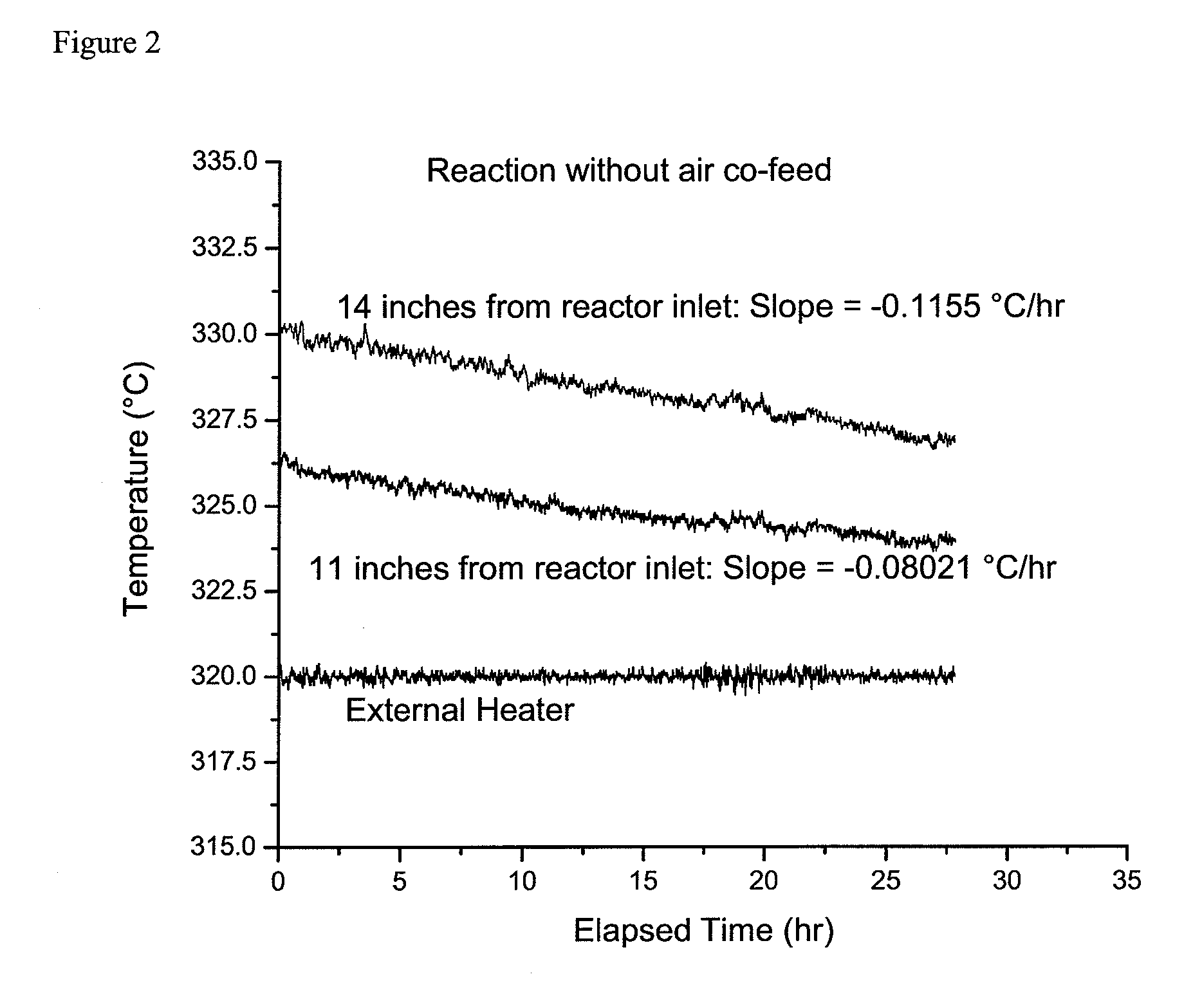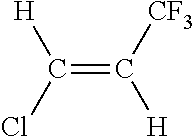Catalyst life improvement for the vapor phase manufacture of 1-chloro-3,3,3-trifluoropropene
a technology of trifluoropropene and catalyst, which is applied in the preparation of halogenated hydrocarbons, physical/chemical process catalysts, hydrogen halide split-off, etc., can solve the problems of short catalyst life in comparison to other fluorination reactions, etc., and achieves the effect of reducing the loss of production time, increasing catalyst life, and slowing down catalyst deactivation
- Summary
- Abstract
- Description
- Claims
- Application Information
AI Technical Summary
Benefits of technology
Problems solved by technology
Method used
Image
Examples
example 1
[0037]This example illustrates the continuous vapor phase fluorination reaction of 1,1,1,3,3-pentachloropropane with hydrogen fluoride to form 1-chloro-3,3,3-trifluoropropene and hydrogen chloride in the presence of oxygen co-feed. The fluorination catalyst for the experiment was fluorinated Cr2O3.
HCC-240fa+3HF→1233zd+4HCl
[0038]A continuous vapor phase fluorination reaction system consisting of air, N2, HF, and organic feed systems, feed vaporizer, superheater, two-inch inner diameter monel reactor, acid scrubber, drier, and product collection system was used. The reactor was loaded with 2135 grams of fluorinated Cr2O3 catalyst which equates to about 1.44 liters of catalyst (the total height of the catalyst bed was about 28 inches). A multipoint thermocouple was installed in the middle of the reactor. The reactor was then heated to a reaction temperature of about 275° C. with a nitrogen gas (N2) purge going over the catalyst after the reactor had been installed in a constant tempera...
example 2
[0043]This example is a comparative example intended to illustrate the effect of oxygen co-feed on the chromium oxide catalyst stability during the continuous vapor phase fluorination reaction of 1,1,1,3,3-pentachloropropane with hydrogen fluoride to produce 1-chloro-3,3,3-trifluoropropene and hydrogen chloride.
HCC-240fa+3HF→1233zd+4HCl
[0044]For this example the same reaction system and reaction conditions were used as in the Example 1 with the exception that at the completion of the experiment for Example 1, the air co-feed was stopped.
[0045]After the air co-feed was stopped the temperature of the external heater was adjusted to bring the catalyst bed temperature, 14 inches from the reactor inlet, to about 330° C. Then, as in Example 1, and as shown in FIG. 2, the catalyst bed temperatures at positions 11 and 14 inches from the reactor inlet were monitored for over 20 hours. It was calculated that the temperature at 11 inches was decreasing linearly at the rate of 0.08021° C. / hr an...
PUM
| Property | Measurement | Unit |
|---|---|---|
| molar ratio | aaaaa | aaaaa |
| molar ratio | aaaaa | aaaaa |
| molar ratio | aaaaa | aaaaa |
Abstract
Description
Claims
Application Information
 Login to View More
Login to View More - R&D
- Intellectual Property
- Life Sciences
- Materials
- Tech Scout
- Unparalleled Data Quality
- Higher Quality Content
- 60% Fewer Hallucinations
Browse by: Latest US Patents, China's latest patents, Technical Efficacy Thesaurus, Application Domain, Technology Topic, Popular Technical Reports.
© 2025 PatSnap. All rights reserved.Legal|Privacy policy|Modern Slavery Act Transparency Statement|Sitemap|About US| Contact US: help@patsnap.com



